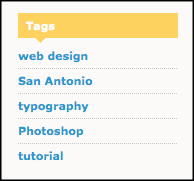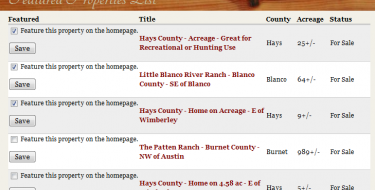Giving Your Content Wings - Part I
In Ann Handley and C.C. Chapman’s book Content Rules, the authors say that while your content has its roots on your website, it’s just as important to “give it wings to soar freely and be shared all across the Web as a social object” (p.102). In other words, the content you create is meant to be viewed and shared by others — it doesn’t do you much good as a business to write blog articles that no one ever sees.
So how can you help your content soar? Over the next three weeks I’ll be delving into the three questions you need to ask to ensure that your content is findable, accessible, and shareable.
Is my content findable?
The first step to giving your content wings is to make sure that people can find it. This means that you need to actively optimize your content and ensure that it as easy as possible for your prospects to find you.
Keywords
As I’ve said before, it starts with a word. Include in your content keywords for which you wish to be found, and be sure to optimize things like meta descriptions and imagery. Optimize each piece of content for one keyword only.
Tags
Tags (sometimes called “Categories”) do pretty much what they sound like: they allow you to “tag” content, making it easier to find and sort. While keywords help you get found on search engines like Google, tags help you get found when a user is searching internally on a single website that has a lot of content.
Video sites like Youtube and Vimeo allow you to tag the content you upload with phrases that are appropriate to that content. When a user searches for content using one of your tags, your content is more likely to appear before content that does not have that tag — because the website considers your content more relevant to the search. Classic examples of using tags for search appear on videos that have been uploaded to Youtube or Vimeo:


Tags can also be used as filtering devices, for when a user only wants to see a specific type of content while on a site. For example, if a reader at the Digett blog wanted to read all of the blog entries that discuss Inbound Marketing, all they would have to do is click the “Inbound Marketing” link in the list of tags (categories) on the left side of the screen. This pulls out all the content related to that subject, and filters out everything else — allowing the user to read exactly what he/she wants.
At their most basic, tags make it as easy as possible for your prospects to sort out the content in which they are interested.
Social networks
It’s important that you create profiles on all the social media websites where your prospects congregate. In a time when 58% of Americans conduct research online before buying a product, it would be a shame to be invisible — or worse, to have someone else claim your name or your company’s name.
Maintaining multiple social media accounts can take more of your time than you are willing or able to spend. Instead of trying to keep up with several profiles, simply use them as landing pages for redirecting visitors to where you are most active (such as your blog, a forum, or one particular social media site).
Stay tuned...
Stay tuned for next week’s installment, when I’ll give you four tips for creating accessible content.
Related Posts
[Image: paulabflat]
MONTHLY MARKETING INSIGHTS.
Get thought-provoking and actionable insights to improve how your firm makes a connection with your customers.





LEAVE A COMMENT
[...] Content strategy usually comes in the form of a blog or news section of a website where new, original articles are published regularly. However, content strategy can also encompass guest blogs, Twitter, Facebook posts, and forum discussions — anywhere you are creating ongoing content that speaks to your audience and leads them back to you as the expert. [...]